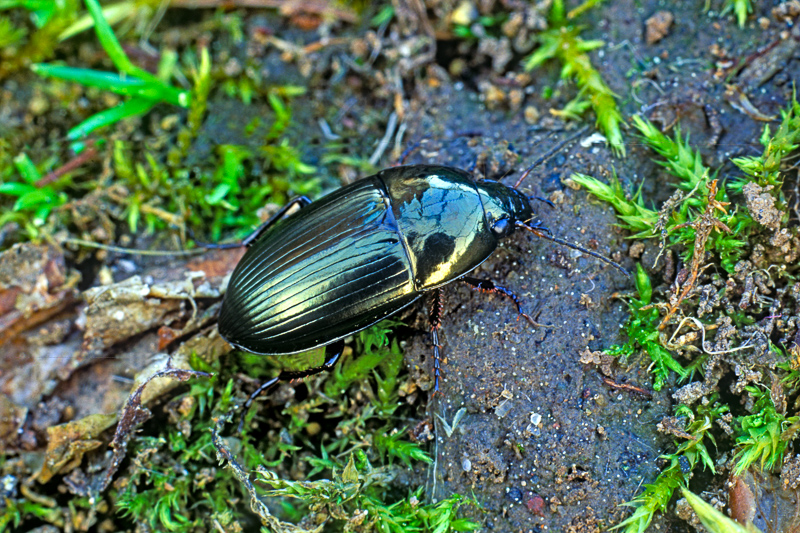Amara montivaga Sturm, 1825
 |
Description: 8-9mm long greenish or bluish black Amara. Phytophagous, living on dry ground, usually on sand or chalk close to human habitation. A recent coloniser and so far known only in the south-west.
NI account: The only Irish site to date is Killarney where Bullock first took it in 1938 (Speight 1976c).
Ecology: Little is known of its ecology in Ireland but it is likely to be synanthropic in ruderal situations.
Distribution: A Eurosiberian temperate species (74) and distributed over most of Europe except the north into west-central Siberia.
Similar Species: Amara ovata: pronotum sinuate inside basal angles, A. eyrinota: elytral intervals flat towards apex; size >10mm, A. similata: pronotum sinuate inside basal angles and with sides nearly parallel-sided in basal half (Fig. 81)
Key Identification Features:
- Body stout and a characteristic 'oval' shape
- Head with two supra orbital punctures
- Elytra with pore-puncture at base of scutellar stria
- Terminal spur of pro-tibia simple
- Antennae with 3 (or 4) pale basal segments
- Size <10mm, broad, convex, tibiae dark
- Elytral striae deepened towards apex, intervals convex
- Pronotum not sinuate inside hind angles (Fig. 81)
Distribution Map from NBN: Amara montivaga at National Biodiversity Network mapping facility, data for UK.
iNaturalist: Amara montivaga at iNaturalist World Species Observations database.
GBIF data for Amara montivaga | Classification: Insecta, Coleoptera, Carabidae, Amara
Thumbnails for genus Amara
| Anderson, R., 2025. Amara montivaga. Sturm, 1825. [In] Ground Beetles of Ireland. https://www2.habitas.org.uk/beetles/species.php?item=7364. Accessed on 2025-04-03. |